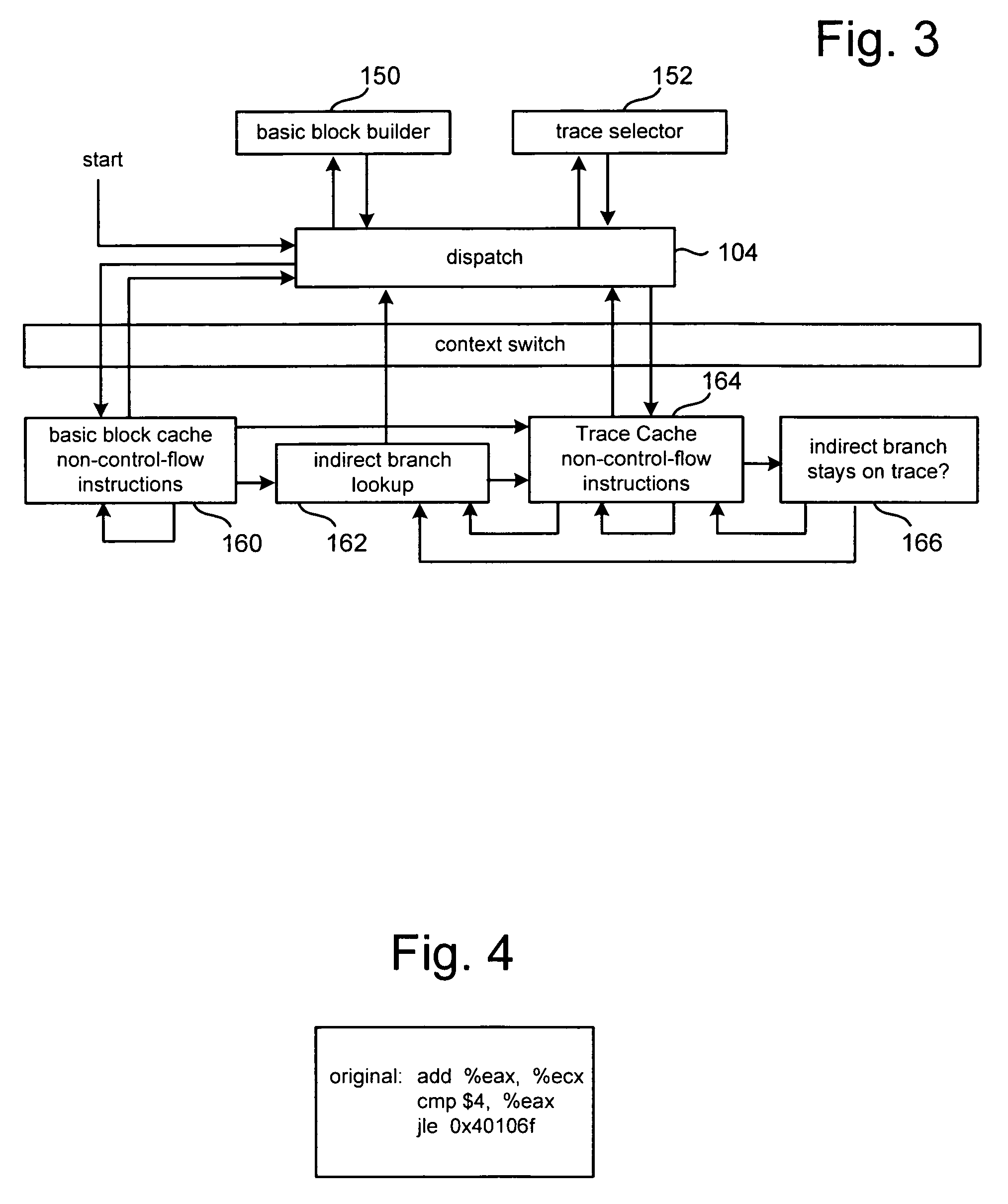Adaptive cache sizing based on monitoring of regenerated and replaced cache entries
a cache and cache entry technology, applied in the field of adaptive cache sizing, can solve the problems of reducing the amount of program information available statically, unable to anticipate the execution of third-party code, and unable to build tools to manipulate these programs
- Summary
- Abstract
- Description
- Claims
- Application Information
AI Technical Summary
Benefits of technology
Problems solved by technology
Method used
Image
Examples
Embodiment Construction
[0022]FIG. 1 depicts a Runtime Code Manipulator (RCM) 10, application 20 and platform 30. RCM 10 is a flexible software layer that comprehensively interposes itself between application 20 and the underlying platform 30. RCM 10 acts as a running control point, allowing custom tools to be embedded inside it.
[0023]RCM 10 allows code transformations on any part of a program while it executes. RCM 10 extends existing code caching technology to allow efficient, transparent, and comprehensive manipulation of an individual, unmodified application 20, running on a stock operating system and commodity hardware (platform 30).
[0024]FIG. 2 illustrates the high-level design of RCM 10. FIG. 2 depicts RCM 10, including code cache 100, context switch 102, dispatch 104 and basic block builder 106. Platform 30 includes hardware 108 and operating system 110. Hardware platform 30 is in communication with code cache 100 and dispatch 104 in order to run application 20. Dispatch 104 communicates with code ...
PUM
 Login to View More
Login to View More Abstract
Description
Claims
Application Information
 Login to View More
Login to View More - R&D
- Intellectual Property
- Life Sciences
- Materials
- Tech Scout
- Unparalleled Data Quality
- Higher Quality Content
- 60% Fewer Hallucinations
Browse by: Latest US Patents, China's latest patents, Technical Efficacy Thesaurus, Application Domain, Technology Topic, Popular Technical Reports.
© 2025 PatSnap. All rights reserved.Legal|Privacy policy|Modern Slavery Act Transparency Statement|Sitemap|About US| Contact US: help@patsnap.com



